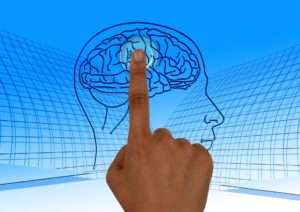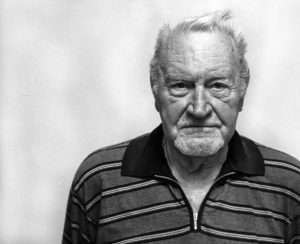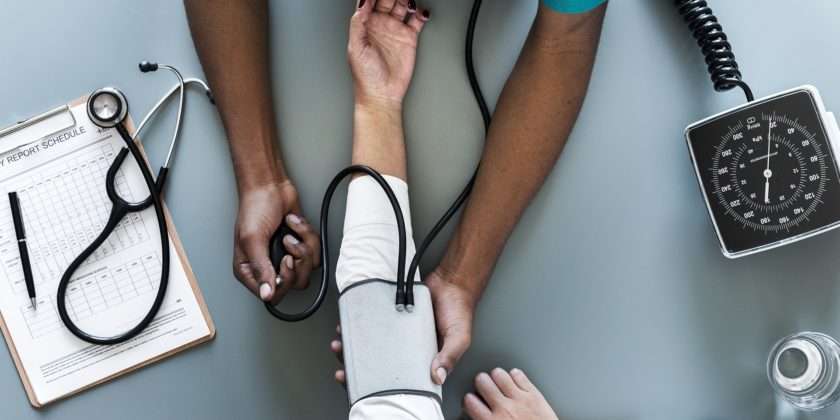3 Ways High Blood Pressure Affects You2
Decreased Blood Flow to the Heart
High blood pressure can harden your arteries, which decreases the flow of blood and oxygen to your heart and lead to heart disease. In addition, decreased blood flow to the heart can cause:
- Chest pain also called angina.
- Heart failure, a condition when your heart can’t pump enough blood and oxygen to your other organs.
- Heart attack, which occurs when the blood supply to your heart is blocked, and heart muscle begins to die without enough oxygen. The longer the blood flow is blocked, the greater the damage to the heart.
The Brain
High blood pressure can burst or block arteries that supply blood and oxygen to the brain, causing a stroke. Brain cells die during a stroke because they do not get enough oxygen. Stroke can cause serious disabilities in speech, movement, and other basic activities, and a stroke can kill you.

The Kidneys
Adults with diabetes, high blood pressure, or both have a higher risk of developing chronic kidney disease than those without these diseases. Approximately 1 of 3 adults with diabetes and 1 of 5 adults with high blood pressure have chronic kidney disease.
Sodium Fact Sheet3
The body needs a small amount of sodium to function, but most Americans consume too much sodium. High sodium consumption can raise blood pressure, and high blood pressure is a major risk factor for heart disease and stroke.1 Heart disease and stroke are the nation’s first and fifth leading causes of death.2
Salt and High Blood Pressure
- Research shows a strong dose-dependent relationship between consuming too much salt and raised levels of blood pressure.
- When salt intake is reduced, blood pressure begins falling within weeks on average.
- Populations who consume diets low in salt do not experience the increase in blood pressure with age that is seen in most Western countries.
- Reducing sodium intake lowers blood pressure, with greater effects among people with hypertension.
Is it Salt, or is it Sodium?
- Sodium chloride is the chemical name for salt.
- The words salt and sodium are not exactly the same, yet these words are often used interchangeably. For example, the Nutrition Facts Panel uses “sodium,” while the front of the package may say “no salt added” or “unsalted.”
- Ninety percent of the sodium we consume is in the form of salt.

Sodium Consumption and Sodium in Our Food Supply
- We all need a small amount of sodium to keep our bodies working properly.
- The 2015–2020 Dietary Guidelines for Americans recommend that Americans consume less than 2,300 milligrams (mg) of sodium each day as part of a healthy eating pattern.
- About 90% of Americans 2 years old or older consume too much sodium.
- The average daily sodium intake for Americans 2 years old or older is more than 3,400 mg.
- Americans are consuming substantially more sodium than in the 1970s. Since 2010, some manufacturers have reduced sodium in some foods, and the amount of sodium consumed has decreased slightly in some groups of people.
- More than 70% of sodium consumed is from processed and restaurant foods. Only a small portion of sodium or salt is used in cooking or added at the table.
- Because sodium is already in processed and restaurant foods when they are purchased, reducing personal sodium intake can be hard, even for motivated people.
- Sodium content can vary across the same types of foods by brand. For example, a slice of frozen cheese pizza can have between 370 mg and 730 mg of sodium; a cheeseburger from a fast food restaurant can have between 710 mg and 1,690 mg.12
- Sodium information currently is not always readily available for restaurant or prepared foods and can be hard for the consumer to estimate.
What’s Pulmonary Hypertension?
Pulmonary hypertension occurs when the pressure in the blood vessels leading from the heart to the lungs is too high. The heart pumps blood from the right ventricle to the lungs to get oxygen. Because the blood does not have to travel very far, the pressure in this side of the heart and in the artery taking blood from the right ventricle to the lungs is normally low—normally much lower than systolic or diastolic blood pressure. When the pressure in this artery gets too high, the arteries in the lungs can narrow and then the blood does not flow as well as it should resulting in less oxygen in the blood.
Pulmonary Hypertension in the United States4
Pulmonary hypertension can occur in association with many other diseases such as lung disease and heart disease. Some common underlying causes include pulmonary arterial hypertension from some types of congenital heart disease, connective tissue disease, coronary artery disease, high blood pressure, liver disease (cirrhosis), blood clots to the lungs, and chronic lung diseases like emphysema. Genetics also play a role in pulmonary hypertension. Pulmonary hypertension occurs at all ages, and the incidence of it increases with age. Pulmonary hypertension is more common among women, non-Hispanic blacks, and among people aged 75 or older than other groups. Heart failure is common in pulmonary hypertension.

Signs and Symptoms
The symptoms of pulmonary hypertension during the initial stage of the disease are common to many other medical conditions (e.g., difficulty breathing, fatigue), often resulting in a delayed diagnosis until more severe symptoms arise (e.g., dizziness, chest pain, ankle swelling, feeling your heart race or pound [palpitations]).2,3
Prevention and Treatment
While not all pulmonary hypertension can be prevented, efforts to prevent high blood pressure, coronary heart disease, chronic liver disease, and chronic lung disease from tobacco use can help prevent pulmonary hypertension in some patients.
At this time there is no cure for pulmonary hypertension. There are many different types of treatments for pulmonary hypertension including pills, inhaled medication, medicine given through the veins under your skin, medicine to reduce swelling in your feet (diuretics), and oxygen.




